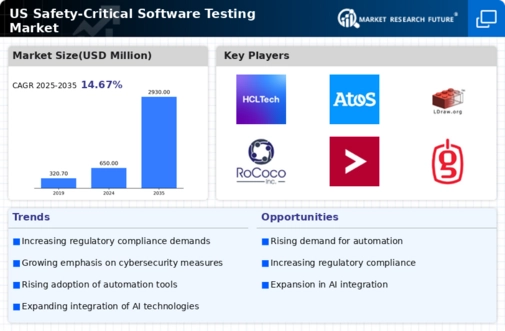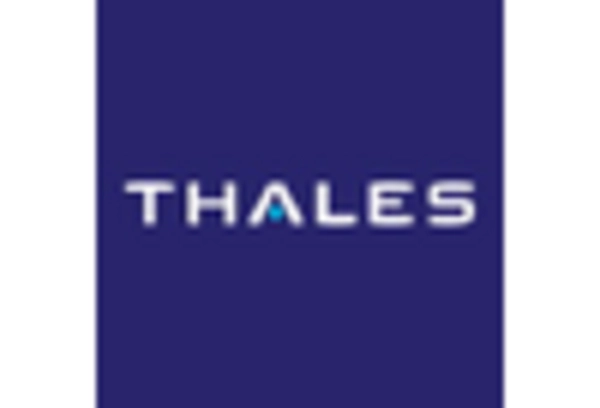Collaboration Between Industry and Academia
Collaboration between industry and academia is fostering innovation in the safety critical-software-testing market. Partnerships are emerging to develop new testing methodologies and share best practices, enhancing the overall quality of safety-critical software. These collaborations often lead to the creation of specialized training programs, equipping professionals with the necessary skills to address the complexities of safety testing. As a result, the market is likely to benefit from a more skilled workforce and improved testing standards. This synergy between academia and industry not only drives advancements in testing practices but also contributes to the overall growth of the safety critical-software-testing market.
Technological Advancements in Testing Tools
The rapid evolution of technology is significantly impacting the safety critical-software-testing market. Innovations in testing tools, such as automated testing frameworks and AI-driven analytics, enhance the efficiency and effectiveness of testing processes. These advancements allow for more thorough testing of software systems, reducing the likelihood of errors that could lead to catastrophic failures. As organizations increasingly adopt these technologies, the market is projected to grow, with a potential increase in market size by over $1 billion by 2027. This shift towards advanced testing tools reflects a broader trend of integrating cutting-edge technology into safety-critical software development, ensuring higher reliability and safety standards.
Rising Demand for Safety in Critical Systems
The increasing complexity of safety-critical systems in sectors such as aerospace, automotive, and healthcare drives the demand for rigorous testing protocols. As these industries evolve, the need for reliable software that meets stringent safety standards becomes paramount. The safety critical-software-testing market is experiencing growth, with estimates suggesting a CAGR of approximately 10% over the next five years. This trend indicates that organizations are prioritizing safety in their software development processes, leading to a heightened focus on comprehensive testing methodologies. Furthermore, regulatory bodies are enforcing stricter guidelines, compelling companies to invest in advanced testing solutions to ensure compliance and mitigate risks associated with software failures.
Growing Awareness of Software Vulnerabilities
The increasing awareness of software vulnerabilities, particularly in safety-critical applications, is a significant driver for the safety critical-software-testing market. High-profile incidents involving software failures have heightened concerns regarding the reliability of critical systems. Consequently, organizations are prioritizing the identification and mitigation of potential vulnerabilities through rigorous testing. This trend is reflected in the market, which is anticipated to grow by approximately 8% annually as companies invest in comprehensive testing strategies. The focus on addressing software vulnerabilities underscores the critical role of safety testing in safeguarding public safety and maintaining trust in technology.
Increased Investment in Research and Development
Investment in research and development (R&D) within the safety critical-software-testing market is on the rise, as companies seek to innovate and improve their testing methodologies. This trend is driven by the need to address emerging challenges in software safety and reliability. Organizations are allocating substantial budgets, with some companies reporting R&D expenditures exceeding 15% of their total revenue. This focus on R&D is likely to yield new testing techniques and tools that enhance the safety and performance of critical software systems. As a result, the market is expected to expand, reflecting the importance of continuous improvement in safety-critical software testing practices.

















Leave a Comment